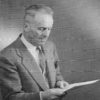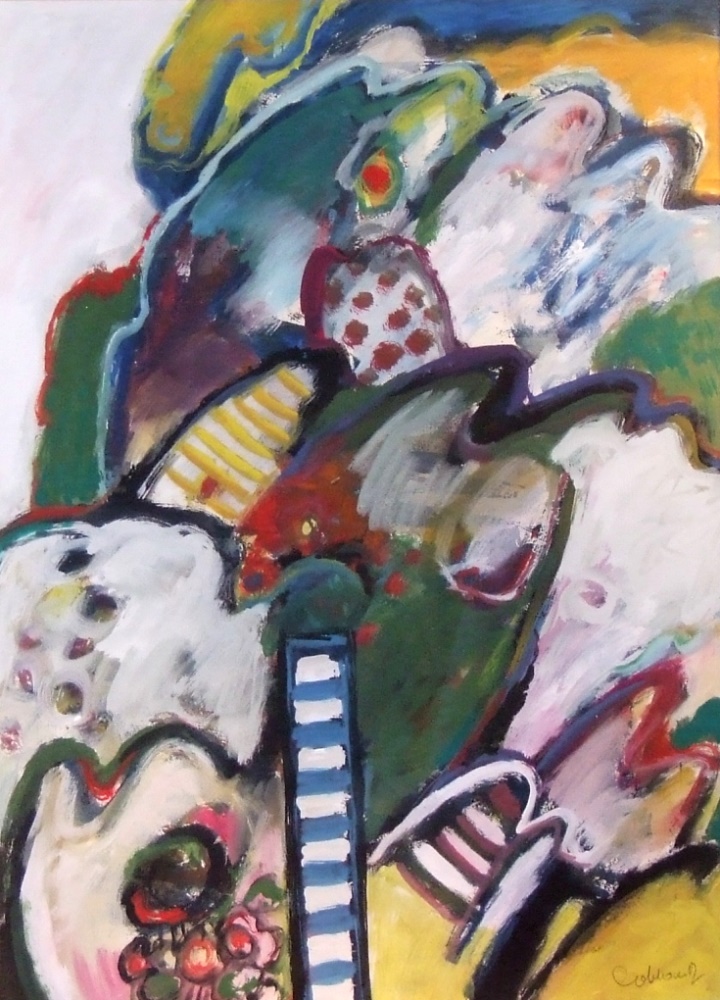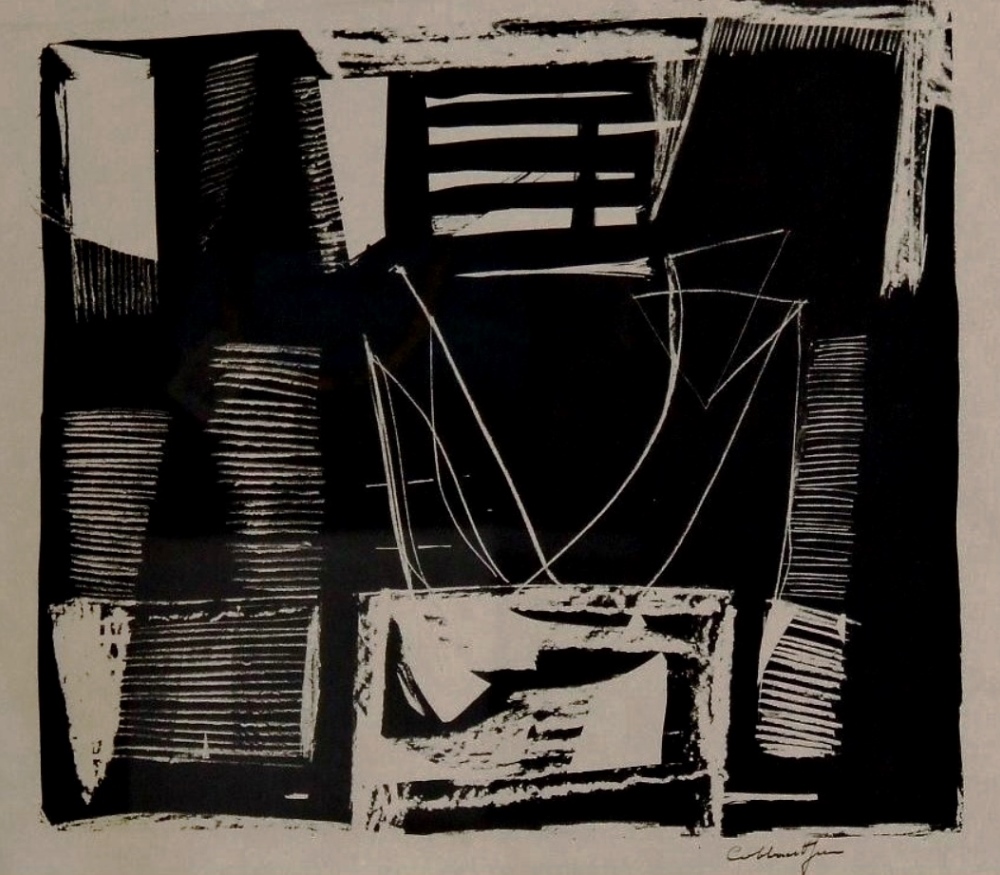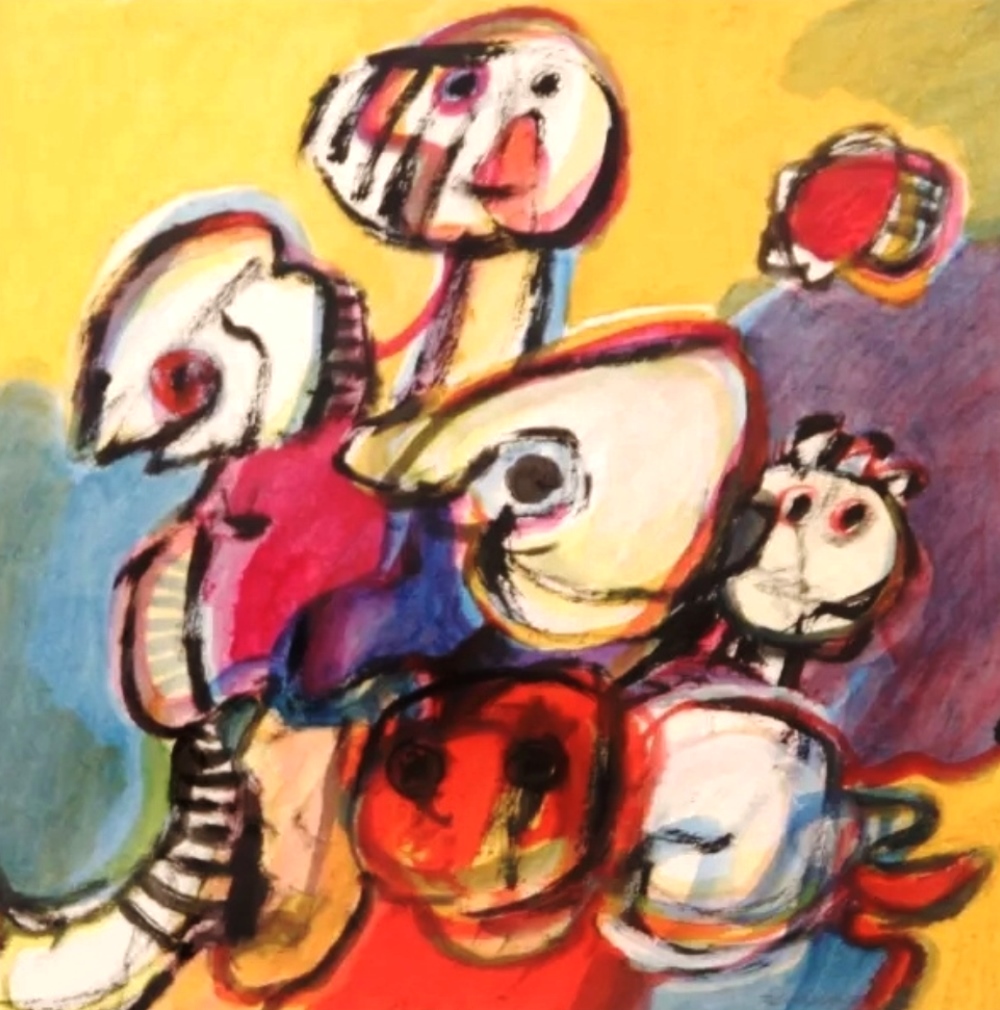Jan Cobbaert was born in Heverlee, Belgium on June 24, 1909 and died on October 3, 1995. He was a Belgian artist. Several disciplines were familiar to him. In addition to painting he devoted himself to the art of drawing, various forms of graphics, ceramics, iron forging, wood sculpting and assemblages, even the art off glass and jewellery design. He also practices monumental art as frescoes and stained glass.
Jan Cobbaert comes from a wealthy family and at a young age he was fascinated by art. The family lives in Korbeek-Lo near Leuven.
Once a week he attends classes in ceramics in the studio of Jacques Charlier (1899 – 1964) and he went to the Academy of Fine Arts. Because after his education, he realizes he wants to continue with art. Cobbaert start studying art history at the Catholic University of Leuven and then he studied at the Institute of Archeology and Art History from 1933 till 1936, classes with Anto Carte and A. Bastien in Brussels.
After these studies, he worked as an all task boy in the shoe business of his father.
In between, he painted his first works and sometimes he continues to attend classes at the Royal Academy of Fine Arts in Brussels. In Brussels by attending those classes, he comes into contact with the Flemish Expressionism and he discovers the environment of the great Expressionists of the second Latem School, as Gustave De Smet and Constant Permeke.
In 1937, Cobbaert’s work is for the first time internationally awarded with the Prix de Rome. Because of that recognition his work is publicly displayed in the town hall of Leuven. This is his first exhibition.
His work, however, meets with incomprehension from the Leuven population. It is found to be very progressive.
Yet it’s his artistic career that opened with the Prize of Rome and he receives a state grant in 1939, he uses the grand for traveling to Italy, Germany and France to study ancient art. His career thus gets a new twist, because of the war in Italy he will soon return to Belgium.
He participates in the exhibitions of Apport between the years 1941 to 45 and La Jeune Peinture Belge in 1944. He is even a founding member of the association of La Jeune Peinture Belge.
He begins with an animist painting that evolves through abstraction towards an intuitive, semi-abstract art, very close to Cobra.
After the end of World War II, Cobbaert deploys his talent further. He studied ceramics again for further perfection at F. Dufey in Brussels from 1955 till 1956, ironwork and (sculptures) at F. Lefevre in Heverlee. His sculptures and assemblages are abstract forms in wrought iron and polyester that express threat and harmony, passion and mastery.
From October 1944 ill 1973 he is also a teacher at the Louvain Academy. Meanwhile, he meets José Beeckman, whom he would later marry. They have two children and the family settled in Kessel-Lo. This trusted family world is going to be his main source of inspiration.
In the 1950’s Cobbaert is aware of his skilled artistic talents and he will gradually break through internationally. A series of successful exhibitions and awards as well at home and abroad, come in successions. Many museums in Belgium buy work from him. Also museums abroad begin to show interest. Thus, one can now admire work of Cobbaert in Norway, Luxembourg, Denmark and Germany. Furthermore, because of the growing interest in his work by also private collectors and individuals, nationally and internationally, solidifies his excellent reputation.
His creativity takes a hit after the loss of his son Marc in 1958 and eight years later that of his wife. But after some time he finds the courage to pick up the joy of creating again. A few years later he meets, Vika Lambrechts, whom he marries. Cobbaert now has found his life optimism completely again and this will reflect in his work which is undergoing a complete metamorphosis. In 1974 he retired as a teacher and now he concentrates entirely on the further development of his oeuvre.
The work of Jan Cobbaert, has diverse forms but make a whole. His work includes several components of various art movements, such as the second Latem School and the Cobra movement.
However, his work is mainly determined by two components. First, there is an increasingly deepened skilled craftsmanship. Secondly, his oeuvre is emotionally and psychologically defined from his sad life events. The death of his son plays an important role. He throws himself in the dream world of the child. Through this fantastic world he wants to keep a close contact with his son. The world of children, dreams and impressions are important and decisive for his paintings.
Around 1950 he came into contact with the Cobra movement, although he did formally no wish to belong to the movement.
He instinctively feels that his work is linked to the expressive language of this movement, with the character of the children’s drawings. For him the drawing, shape, color, and contents form a single compositional whole. They determine the whole unadorned. The shape is deliberately disturbing and stripped of all aestheticizing details; it’s hard, stiff and childish. His paintings also show a permanent dissatisfaction, they look constantly unfinished. This is evident in all his works in which he strives to represent themes as the poignancy of human nature, environment and life.
He gets great retrospectives in 1990 in many cities in Flanders, and artworks are bought by the Museums of Brussels, Ghent, Leuven, Liège, Mons, Ostend, Verviers and Zurich.
Jan Cobbaert died on October 3, 1995, but his work is still found in various galleries. His popularity is still strong amongst collectors; he has a strong core of Cobra group amateurs
#biography



